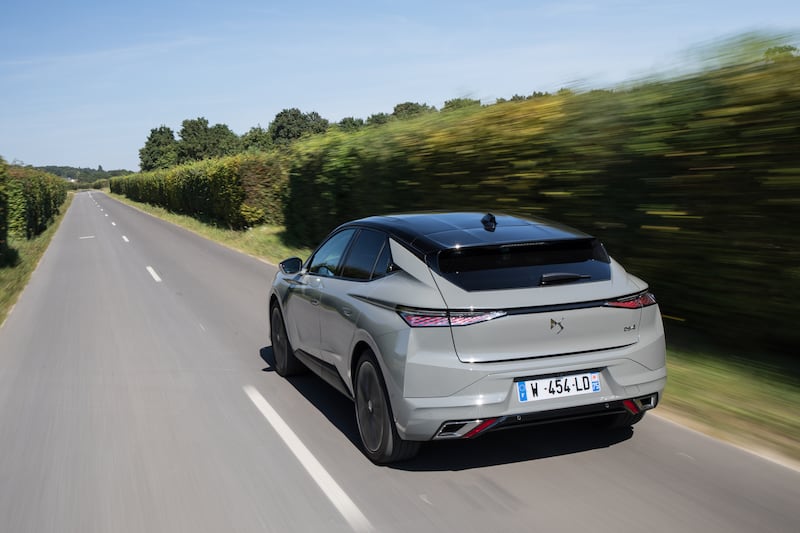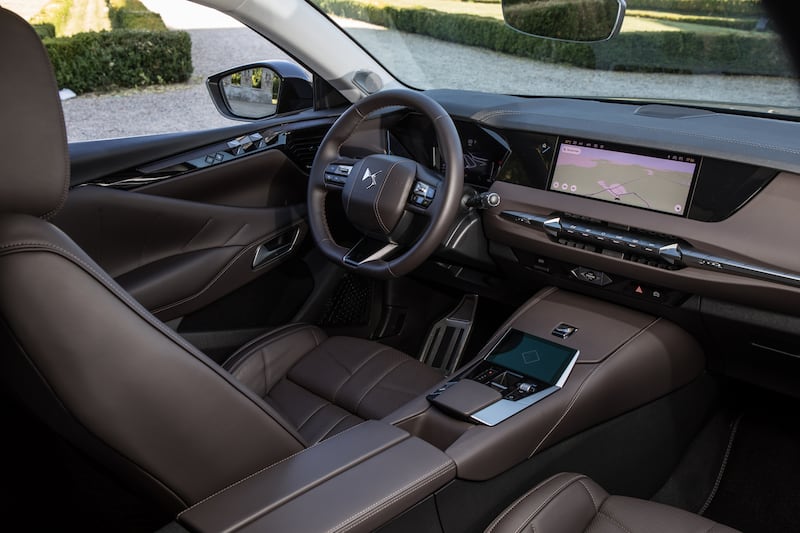We need to talk about objectivity for a moment. In theory, journalists and reviewers have to be faultlessly objective. They should remove their own emotions and peccadilloes from the equation, and approach each object, each story, each day with detached, cold expertise.
In theory.
Here’s the problem. Arguably, philosophically, no-one can be fully objective. Whatever it is we humans do, we bring our own pre-conceptions with us. We bring our subjectivity. We bring our own thoughts and impressions of what should be.
Manufacturers of products, who wish those products to be reviewed, know this. And they know how to work on it. Which brings us to me, sitting behind the wheel of the new DS 4, driving through the rolling countryside of Chantilly. France is ever apt to overwhelm one's objectivity with warm feelings of fraternity, but today that is especially the case. The sun is shining, my window is down, and the sweet summer air is wafting into the cabin. Now try being objective about anything …

Of course, this is DS’s plan – to lull me, and fellow car reviewers, into a sense of appreciation and affection for all things French. Surely no brand is quite so French as DS?
Born from Citroën, inspired by the original 1955 Citroën DS saloon (a car more than most which has its hands on the best-ever trophy), DS is now its own thing, and it’s currently the leading luxury arm of the vast Stellantis car-making empire.
Beneath the DS 4’s low-slung bodywork, there lies the bones of humbler Peugeots, Citroëns, and even Opels. But the styling has been carefully wrought to disguise all that. I’m not sure you could call it pretty as such, but the DS 4 certainly has presence. It’s also the latest car to try to appeal to SUV buyers without actually being an SUV.
It is in fact a slightly taller, quite roomy five-door hatchback - a bodystyle that is making a comeback, both for aerodynamic reasons, and presumably because car makers are (rightly) nervously looking at potential anti-SUV legislation coming down the pipe.
The DS 4 tries, then, to have its gateaux and eat it by being tall enough to just about fool you into thinking that you’re sitting up high, but actually being quite low-down. It’s an interesting mix, not for everyone I guess, but a rather likeable compromise and a relief from the onrushing tide of needlessly boxy SUVs. If you want a slightly more rugged look, there is a “Cross” version but to be honest, it seems a bit superfluous.
Inside, DS has gone all-out for luxury and there’s a faint hint of Lexus in the way the cabin is laid out. Almost everything you can see is wrapped either in leather or man-made suede. The seats have stitching that makes them look like expensive watch straps. Much use is made of a diamond-faceted motif that covers the switches and infuses the graphics of the large touchscreen and the surprisingly small digital instrument panel.
Initial quality is very impressive – everything looks and feels appropriately luxurious and expensive. Comfort levels are high – those front seats are fantastic – and if the space in the back doesn’t quite live up to Revolutionary France’s ideals of égalité then it is at least just about fit-for-purpose.

Now, a French car – a true French car – should be all about comfort when driving. Suspicious hackles are raised when you read the spec sheet and see that DS will sell not only a specific “Performance Line” version of the DS 4, but equips all models with a selectable Sport mode. This is a dangerous road down which to go – when DS tried to make one of its previous models, the DS 5, firm-riding and sporty, the result was a dynamic mess.
Thankfully, that is not the case here. Optionally, you can equip the DS 4 with a windscreen-mounted camera that reads the road surface ahead. That camera can then send warnings to the adjustable shock absorbers to tense or relax according to what lumps and craters are coming up.
The results are a little mixed – some short, sharp intrusions still send an unpleasant thud up through the springs – but overall, the DS 4 manages to ride as a posh French car should. In fact, for the most part it glides rather serenely. Of course, this is on French tarmac, which is often in rather better condition than its Irish equivalent, so we’ll have to try one at home before passing a final verdict.
In terms of steering and cornering, the DS 4 is fine – never quite engaging nor thrilling in the manner of a rival BMW, but precise, agile for its size, and never less than entirely pleasant. It's also very, very refined and silent in the cabin, save for a touch of tyre roar on coarse surfaces.
Power comes from a 225hp plugin-hybrid in this "E-Tense" version – familiar from sundry Peugeot 508 and Citroen C5 Aircross models. It has a 12.4kWh battery which, when fully charged, gives you a claimed 55km electric range. Plugin-hybrids come in for a lot of stick from the environmental lobby, who fret that owners buy them and then run them without ever actually plugging them in, negating their eco advantage.
That may be the case, but this DS 4 is capable of some impressive figures – over a 150km test route which included country roads, tiny, beautiful villages, and long autoroute stretches, we averaged 5.1-litres per 100km fuel economy – better than most diesel cars would do, and with that ability to run on battery-only power for extended stretches. Use it correctly, and it’s impressive.
It's also stuffed with technology – a heads-up display, that trick suspension, a little supplementary touchscreen down by the gear selector that allows you to control the bigger screen on the dash (and which will, by the time the DS 4 goes on sale in Ireland later this year, also be able to recognise letters "written" on it by your finger), clever LED headlights, and infra-red night vision. Nothing we haven't seen from other car makers, but impressive tech all the same.
DS Ireland currently figures on selling around 100 DS 4s next year, all but a handful of them the hybrid model (a non-hybrid 225hp 1.6 petrol turbo version is available too).
Would it be worth holding off, and waiting for the all-electric DS 4 to arrive in 2023? Possibly. Even so, convincing Irish buyers to part with their hard-earned for a pricey (we assume – prices aren’t set yet but DS is a premium brand, so …) French hatchback isn't going to be easy.
Should buyers make that leap, take that walk past the serried ranks of expensive German autos to which they’ve become wedded of late? Yes. Maybe. I’m not sure. That sweet summer breeze, still wafting in through the window is doing its damndest to convince me of the greatness of France and all things French. It’s tough to be objective in such circumstances …
Lowdown: DS 4 E-Tense PHEV
Power: 1.6-litre petrol engine and a 82kW electric motor putting out 225hp and 360Nm of torque with an eight-speed automatic transmission and front-wheel drive
CO2 emissions (annual motor tax): 29g/km (€140)
L/100km (MPG): 1.3 (217)
Electric range: 55km
Electric consumption: 18.2kWh/100km
0-100km/h: 7.7sec
Price: TBA
Verdict: In France, the DS 4 is rather lovely. How it will fare on a wet Wednesday in Ireland remains to be seen












